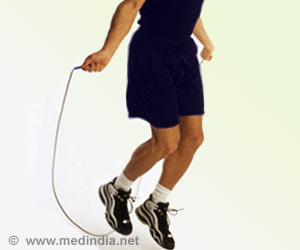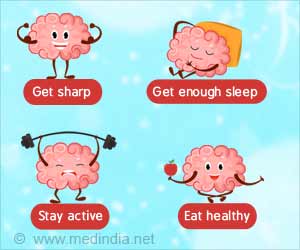The National Heart, Lung, and Blood Institute (NHLBI) of the National Institutes of Health (NIH) has issued a new publication in order to ensure that people get good exercise.
The National Heart, Lung, and Blood Institute (NHLBI) of the National Institutes of Health (NIH) has issued a new publication in order to ensure that people get good exercise. Even though regular physical activity is thought to help maintain a healthy heart, around 60 percent of US adults do not get the necessary exercise.
"Your Guide to Physical Activity and Your Heart" presents comprehensive and easy-to-understand information on the impact of physical activity on your heart, as well as the power of physical activity to keep you healthy overall. Since physical inactivity is one of several major heart disease risk factors that you can do something about, the 44-page guide is full of practical tips, including sample walking and jogging programs, instructions for finding your target heart rate zone, ideas for making fitness a family affair, and an overview of the best physical activities for a healthy heart."When it comes to getting in shape, what's good for you is good for your whole family," said NHLBI's Karen A. Donato, S.M., R.D., program coordinator of both We Can! (Ways to Enhance Children's Activity and Nutrition), NIH's national education program to prevent childhood obesity, and the NHLBI Obesity Education Initiative. "To maintain health, all adults should be moderately active for at least 30 minutes per day on most days of the week. To help manage body weight and prevent unhealthy weight gain, at least 60 minutes per day is recommended. Children and adolescents also need to be active for at least 60 minutes per day. So pry the kids off the couch and help yourself stay fit as well by doing enjoyable activities together."
There are many ways people can incorporate physical activity into everyday life such as:
* Use the stairs--both up and down--instead of the elevator. Start with one flight of stairs and gradually build up to more.
* Park a few blocks from the office or store and walk the rest of the way. If you take public transportation, get off a stop or two early and walk a few blocks.
* While working, take frequent activity breaks. Get up and stretch, walk around, and give your muscles and mind a change of pace.
Advertisement
* Do housework, gardening, or yard work at a more vigorous pace.
Advertisement
In addition to providing information on protecting your heart, the guide also addresses the many other benefits of regular physical activity like burning extra calories, building stamina, improving balance, strengthening your lungs, and boosting the way you feel. It deals with the myths and motivational barriers associated with physical activity, while providing practical advice and suggestions for getting the most health benefits from a physical activity program.
Source: Eurekalert






